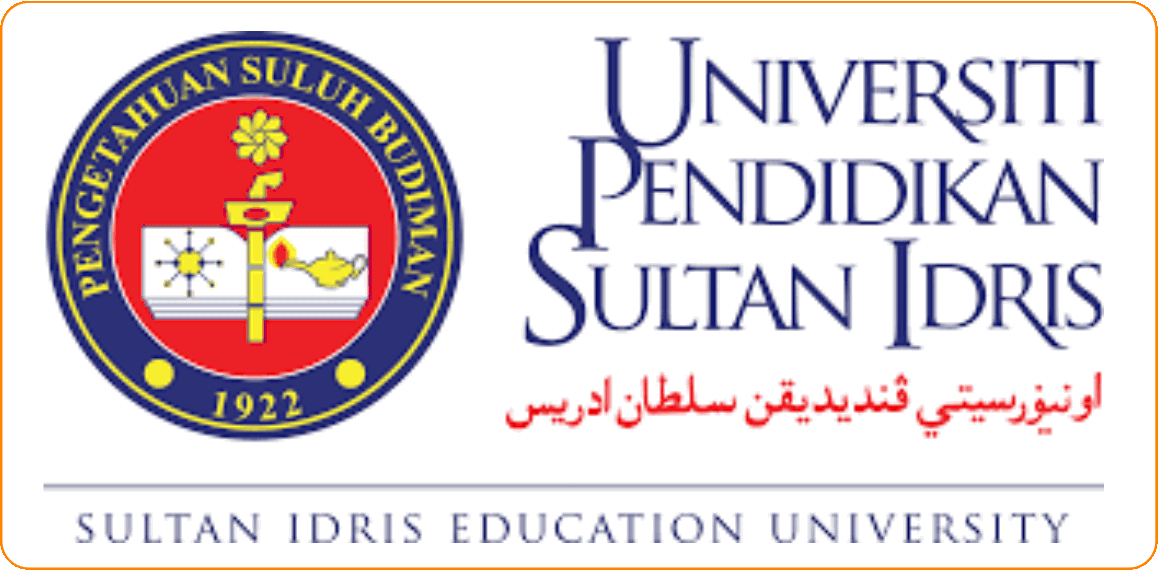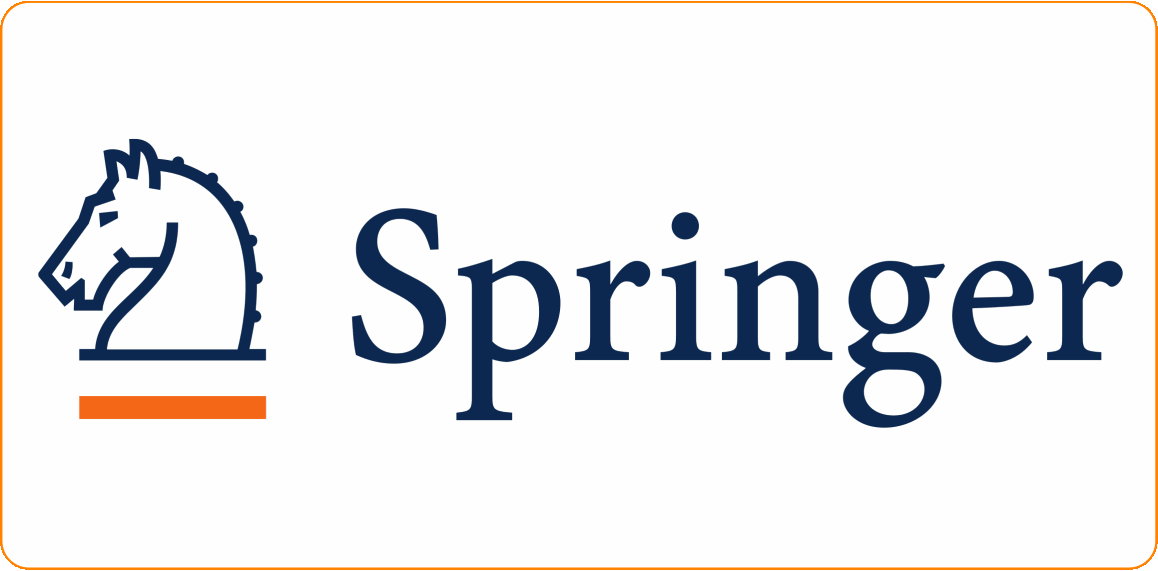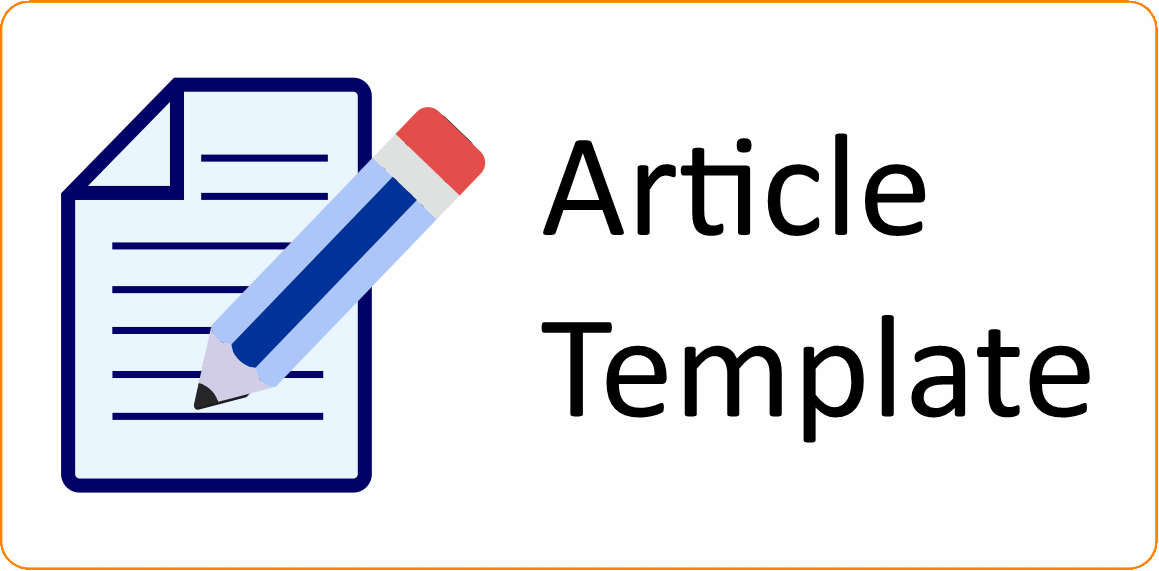Ease of Use of Augmented Reality as an Online Learning Tool to Improve Student Performance and Achievement in Wood Carving Art
Kemudahan Penggunaan Augmented Reality sebagai Alat Bantu Pembelajaran Online bagi Meningkatkan Kinerja dan Prestasi Siswa Dalam Seni Ukiran Kayu
Abstract
Krisis global pasca merebaknya epidemi Covid-19 berdampak pada proses belajar mengajar (PdP). Masalah utama pdP selama epidemi Covid-19 adalah keterbatasan dalam melakukan kegiatan tatap muka di dalam kelas. Oleh karena itu, diperlukan bantuan pembelajaran agar PdP dapat berjalan optimal meskipun tidak ada interaksi tatap muka antara guru dan siswa. Penelitian ini menyoroti penerapan Augmented Reality untuk mendukung pembelajaran jarak jauh dalam situasi epidemi Covid-19, khususnya dalam topik seni ukiran kayu. Aplikasi selular AR Wood Carving Art menggunakan model desain ADDIE. Aplikasi seluler AR Wood Carving Art dievaluasi berdasarkan kegunaannya (ease of use). Berdasarkan hasil penelitian, responden menyetujui bahwa aplikasi selular AR Wood Craving Art berguna dan aplikasi menghemat waktu ketika pengguna menggunakannya sehingga aplikasi selular AR Wood Craving Art efektif digunakan dalam pembelajaran yang membuat pengguna lebih produktif, kreatif, dan inovatif.
Ease of Use of Augmented Reality as an Online Learning Tool to Improve Student Performance and Achievement in Wood Carving Art
Abstract: The global crisis following the outbreak of the Covid-19 epidemic has had an impact on the teaching and learning process (PdP). The main problem with PdP during the Covid-19 epidemic was the limitation in conducting face-to-face activities in the classroom. Therefore, a learning aid is needed to enable PdP to run optimally even though there is no face-to-face interaction between teachers and students. This research highlights the application of Augmented Reality to support distance learning in the Covid-19 epidemic situation, specializing in Wood Carving Art for the subject of Visual Arts. The AR Wood Carving Art mobile application uses the ADDIE design model. The AR Wood Carving Art mobile application is evaluated based on its ease of use. Based on the result, respondents agree that the AR Wood Craving Art mobile application is useful and the application saves time when users use it, therefore the AR Wood Craving Art mobile application is effectively used in learning which makes users more productive, creative, and innovative.
Keywords: Augmented Reality, Ease of Use, Teaching and Learning.
Downloads
References
T. Khan, K. Johnston, dan J. Ophoff, "Dampak dari Aplikasi Augmented Reality tentang Motivasi Belajar Siswa, AHCI, vol. 19, no. 1, pp. 1-14, 2019.
H. Köse, dan N. Güner-Yildiz, "Augmented Reality sebagai bahan pembelajaran dalam pendidikan berkebutuhan khusus," EIT, vol. 26, no. 1, pp. 1921–1936, 2021.
A. Theodoropoulos, dan G. Lepouras, "Augmented Reality and programming education: A systematic review," IJCCI, vol. 10, 2021. doi: 10.1016/j.ijcci.2021.100335.
W. A. N. Wan Idris, H. Halim, dan H. Hassan, "GENIUS KIDS: Learn to Count through Games", International Journal of Multimedia and Recent Innovation, vol. 1, no. 1, pp. 1-17, 2019. doi: 10.36079/lamintang.ijmari-0101.71
H. Halim, W. A. N. Wan Idris, H. Hassan, and I. Y. Panessai, “Learning Logic Gate through 7-Gates”, International Journal of Multimedia and Recent Innovation, vol. 2, no. 1, pp. 1-10, 2020. doi: 10.36079/lamintang.ijmari-0201.70
M. A. Ishak, M. R, Kosnan, and N. F. Zakaria, “Build IoT through Virtual Reality”, International Journal of Multimedia and Recent Innovation, vol. 2, no. 1, pp. 11-25, 2020. doi: 10.36079/lamintang.ijmari-0201.80
A. Z. Zakaria, H. Hassan, H. Halim, W. A. N. Wan Idris, M. A. Abdullah Zawawi, and N. F. Mansor, “Learning Mathematics: One Minute”, International Journal of Multimedia and Recent Innovation, vol. 2, no. 2, pp. 76-86, 2020. doi: 10.36079/lamintang.ijmari-0202.130
D. Roopa, R. Prabha, and G. A. Senthil, “Revolutionizing education system with interactive augmented reality for quality education,” Materials Today: Proceedings. 2021. doi: 10.1016/j.matpr.2021.02.294.
H. J. Kim & S. Lee, “Examining the Role of Engaging in Research Activities with Digital Technologies for Graduate Students' Success,” IJETL, vol. 16, no. 4, pp. 212-227, 2021.
A. Lumbe, R. V. Mangizvo, and C. Mushaka, “Feasibility of Total Migration to Online Learning in Zimbabwe Open University: The Case of Gokwe North District Centre,” IJREHC, vol. 2, no. 2, pp. 85-99, 2021.
S. Shorbagi, N. Sulaiman, A. Hasswan, M. Kaouas, M. M. Al-Dijani, R. A. El-hussein, M. T. Daghistani, S. Nugud, and S. Y. Guraya, Evaluating the feasibility and effectiveness of e-OSCE in the COVID- 19 Era,” Researchsquare, pp. 1-21. 10.21203/rs.3.rs-506145/v1, 2021.
J. B. Barhorst, G. McLean, E. Shah, and R. Mack, “Blending the real world and the virtual world: Exploring the role of flow in augmented reality experiences,” Journal of Business Research, vol. 122, pp. 423-436, 10.1016/j.jbusres.2020.08.041, 2021.
P. A. Rauschnabel, “Augmented reality is eating the real-world! The substitution of physical products by holograms,” International Journal of Information, vol. 57, pp. 268-4012. 2021. doi: 10.101 6/j.ijinfomgt.2020.
N. A. N. Ibharim, S. Z. Ramli, S. A. Zahari, N. A. A. Edyanto, and M. A. Abdullah Zawawi, “Learning History Using Augmented Reality,” International Journal of Multimedia and Recent Innovation, vol. 3, no. 1, pp. 1-10, 2021. doi: lamintang.ijmari-0301.199
B. Liu, and J. Tanaka, “Virtual Marker Technique to Enhance User Interactions in a Marker-Based AR System,” Applied Sciences, 10.3390/app11104379, 2021.
I. A. A. Putra, and I. G. N. A. C. Putra, “Development of Augmented Reality Application for Canang Education Using Marker-Based Tracking Method,” Jurnal Elektronik Ilmu Komputer Udayana, vol. 9, no. 3, pp. 365-274, 2021.
N. Golse, P. Petit, M. Lewin, E. Vibert, and S. Cotin, “Augmented Reality during Open Liver Surgery Using a Markerless Non-rigid Registration System,” Journal of Gastrointestinal Surgery, vol. 25, pp. 662–671, 2020
A. Elsharkawy, K. Naheem, D. Koo, and M. S. Kim, “A UWB-Driven Self-Actuated Projector Platform for Interactive Augmented Reality Applications,” Applied Sciences, vol. 11, no. 6, doi.org/10.3390/app11062871, 2021.
A. Gomes, K. Fernandes, and D. Wang, “Surface Prediction for Spatial Augmented Reality Applications,” Virtual Reality, 2021. doi: 10.1007/s10055-020-00490-2.
R. K. Gupta, Augmented Reality Based Collaborative Product Enhancement. Springer, Singapore, 2021.
R. Romli, M. A. Aznan, L. Z. Xian, A. A. Bakhoruddin, F. N. H. Mohd Wazir, and A. R. S. Gurdial Singh, AR@UNIMAP: A Development of Interactive Map Using Augmented Reality,” Journal of Physics: Conference Series, vol. 1755, 2020.
S. N. S. Abu Samah, “The Efficacy of Augmented Reality on Student Achievement and Perception among Teluk Intan Community College Student in Learning 3D Animation,” International Journal of Multimedia and Recent Innovation, vol. 2, no. 2, pp. 87-95, 2020. doi: 10.36079/lamintang.ijmari-0202.131
N. A.Atikah, S. Z. Ramli, N. A. A. Ibharim, S. A. Zahari, and M. A. A. Zawawi, “Learn Idioms Using Augmented Reality,” International Journal of Multimedia and Recent Innovation, vol. 3, no. 1, pp. 11-16, 2021. doi: 10.36079/lamintang.ijmari-0301.199
Kementerian Pendidikan Malaysia. Sukatan Pelajaran Kurikulum Bersepadu Sekolah Menengah: Pendidikan Seni Visual. Kuala Lumpur: Pusat Pembangungan Kurikulum KPM, 2020.
R. M. Rabori, B. Bagherian, and M. Nematollahi, “Simulation-based mastery improves nursing skills in BSc nursing students: a quasi-experimental study,” BMC Nursing, vol. 20, no. 10, 2021.
N. I. M. K. Daud, E. Arbi, and M. Faizal, “Pengaplikasian ukiran kayu melayu dalam seni bina di Malaysia,” Journal of Design and Built Environment, vol. no. 11, pp. 1-14, 2012.
G. Chilton, N. Gerber, A. Bechtel, T. Councill, M. Dreyer, and E. Yingling, “The Art of Positive Emotions: Expressing Positive Emotions within the Intersubjective Art Making Process,” Canadian Art Therapy Association Journal, vol. 28, no. 1, 2015. doi: 10.1080/08322473. 2015.1100580.
D. D. Pradipta, Madlazim, E. Hariyono, “The Effectiveness of Science Learning Tools Based on Education Sustainable Development (ESD) to Improve Problem-Solving Skills,” International Journal of Recent Education Research, vol. 2, no. 3, 2021. doi: doi.org/10.46245/ijorer. v2i3.113.
H. N. Fatiyah, Riandi, and R. Solihat, “Development of learning tools education for sustainable development (ESD) integrated problem-solving for high school,” Journal of ICMScE, vol. 1806, 2020.
N. H. Rahani, A. A. Bilong, M. R. Mat Suruji, and I. Y. Panessai, “Learning Logic Gates Using Augmented Reality,” International Journal of Multimedia and Recent Innovation, vol. 2, no. 1, pp. 26-44, 2020. doi: 10.36079/lamintang.ijmari-0201.81
I. Y. Panessai, N. Iksan, S. A. Zahari, A. S. Abdulbaqi, M. M. Lakulu, M. R. Husin, H. Ahmad, H. AbdArif and Pratiwi, Learning Internet of Things by using Augmented Reality, in ICVARS '2021: 2021 the 5th International Conference on Virtual and Augmented Reality Simulations. Australia. March 20–22, 2021, Melbourne, VIC, Australia, 2021.
S. F. Sezali, A. M. Radzuan, N. I. MohdShabudin, and R. A. Afendi, “POCKET MALAYSIA: Learning About States in Malaysia Using Augmented Reality,” International Journal of Multimedia and Recent Innovation, vol. 2, no. 1, pp. 45-59, 2020. doi: 10.36079/lamintang.ijmari-0201.82.
Z. Zainal Abidin, and M. A. Abdullah Zawawi, “OOP-AR: Learn Object Oriented Programming Using Augmented Reality”, International Journal of Multimedia and Recent Innovation, vol. 2, no. 1, pp. 60-75, 2020. doi: 10.36079/lamintang.ijmari-0201.83.


















